Samsung Rolls Out Its First UFS Cards: SSD Performance in Card Form-Factor
by Anton Shilov on July 7, 2016 8:58 AM EST- Posted in
- Storage
- Samsung
- UFS
- Memory Cards
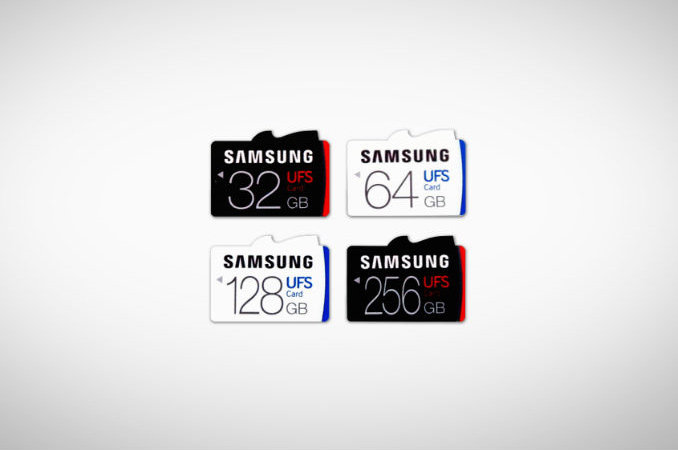
Samsung today introduced the world’s first flash memory cards in UFS form-factor. The cards are compliant with the UFS Card 1.0 specification and offer performance comparable to that of desktop SATA SSDs. It is worth noting that the new cards are not backwards compatible with current microSD devices, which use various versions of SD cards, but they open doors to new levels of removable storage performance as the spec will develop in the coming years.
The new UFS memory cards from Samsung rely on the UFS 1.0 Card Standard (single 5.8 Gbps lanes) published earlier this year. Samsung intends to offer UFS cards with 32, 64, 128 and 256 GB capacities. The top-of-the-range 256 GB UFS card will offer sequential read performance up to 530 MB/s and sequential write performance up to 170 MB/s. As for random performance, then Samsung declares 40,000 read IOPS and 35,000 write IOPS for the 256GB version.
The Universal Flash Storage specification for consumer electronics was published around five years ago and is currently used to connect SoCs to NAND flash storage inside smartphones and other devices. UFS relies on the SCSI transfer architecture as well as on an M-PHY and UniPro electrical interface developed by MIPI Alliance. The SCSI architectural model allows the storage to take advantage of multiple commands with command queuing features, and thus greatly improve random read/write performance for NAND flash storage by supporting simultaneous reading and writing. Meanwhile, the M-PHY interface with 2.9-5.8 Gbps data-rate per lane gives a significant increase in bandwidth for NAND devices. The boosted performance typically helps speed up loading of applications, or capturing images or videos in higher resolution (and/or with enhanced bit-rate). UFS-compliant memory cards bring the advantages of SCSI and M-PHY to removable storage in card form-factor.
Samsung positions its UFS memory cards for a variety of future compatible devices, such as DSLRs, 3D VR cameras, drones, mobile devices and other electronics, which benefit from high-performance removable storage. At present, none of such devices are commercially available, but with new cards approaching, it is logical to expect makers of devices to catch up.
The world’s first UFS memory cards have passed Universal Flash Storage Association (UFSA)’s certification program, which assesses electrical and functional specifications. As a result, Samsung will be able to start selling its UFSA-certified UFS cards as soon as the first devices with appropriate card readers launch.
Other makers of NAND flash memory and products based on it, such as Micron, SK Hynix, Toshiba and Western Digital (SanDisk), will also likely launch their UFS memory cards in the coming months and quarters.
Since the UFS standard is developing (currently consumer electronics use UFS 2.0 spec for non-removable storage) and is expected to advance to versions 3.0 and 4.0 in the coming years. It is expected that the removable UFS card line will also improve to the newer standards over time.
Samsung did not touch upon pricing or availability of the upcoming UFS memory cards.
Source: Samsung


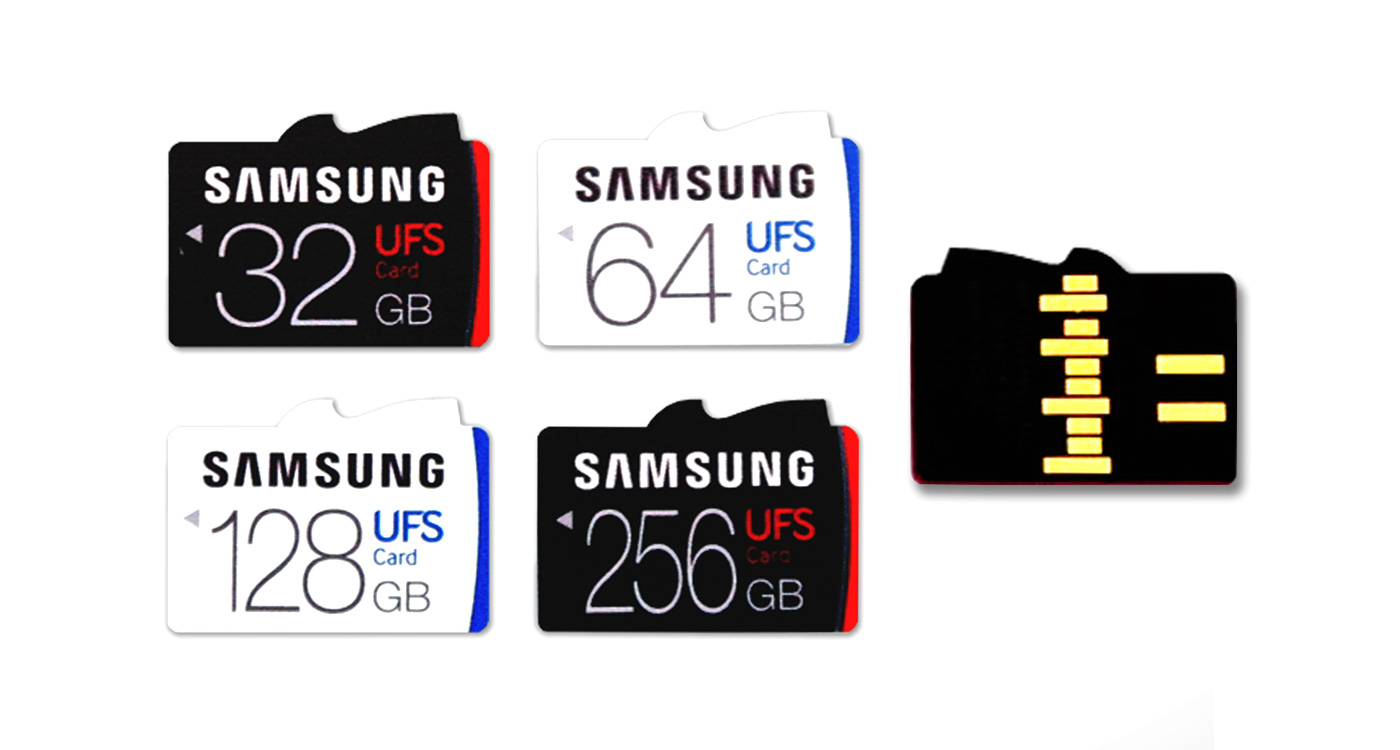
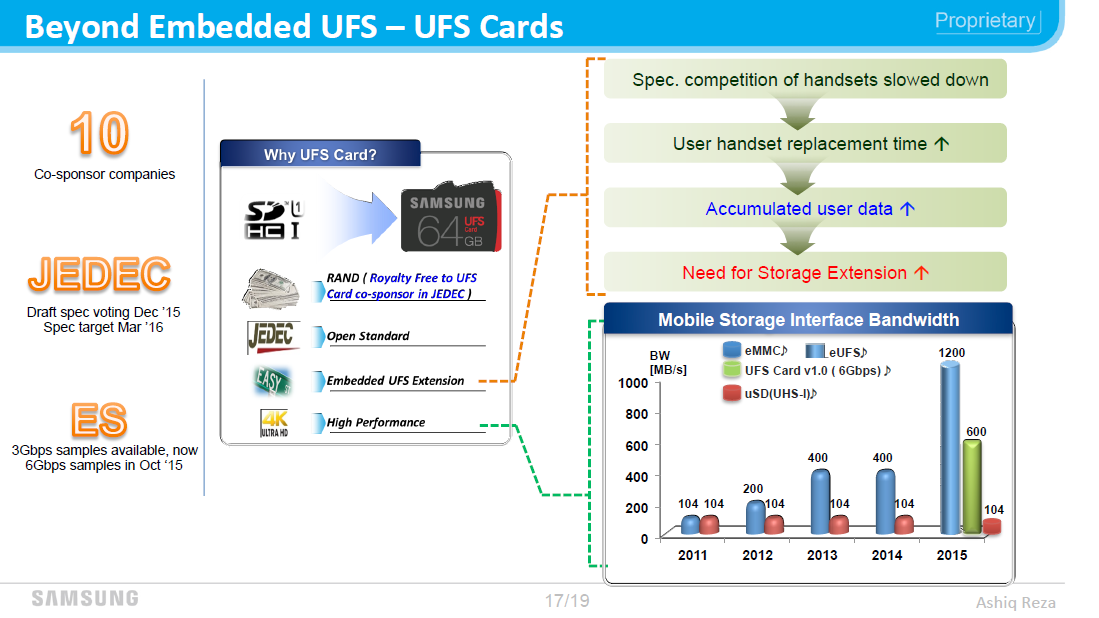
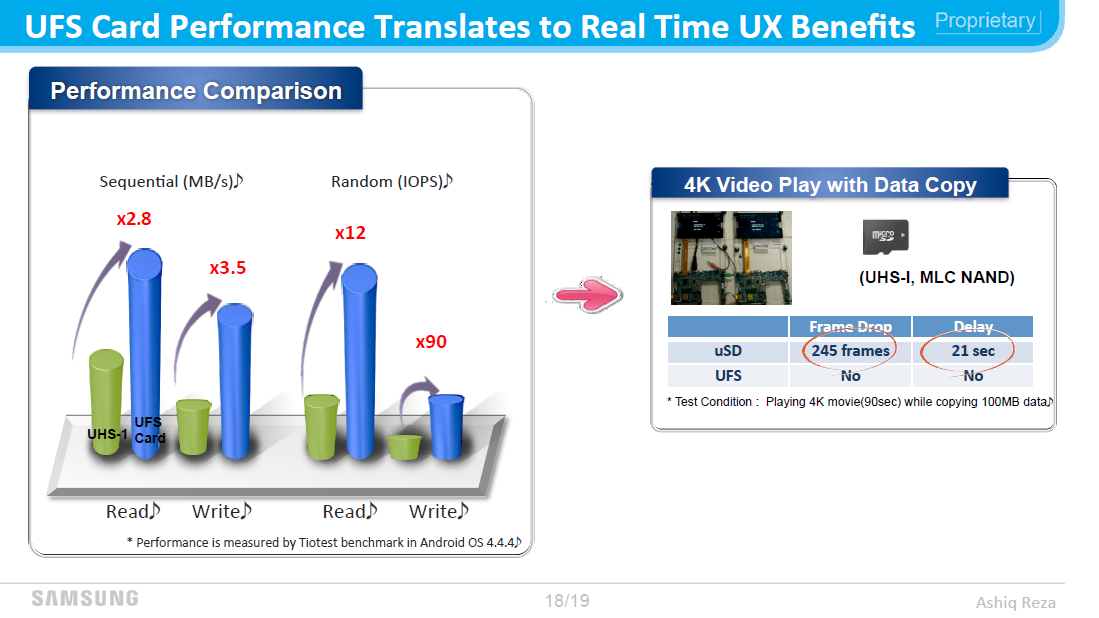
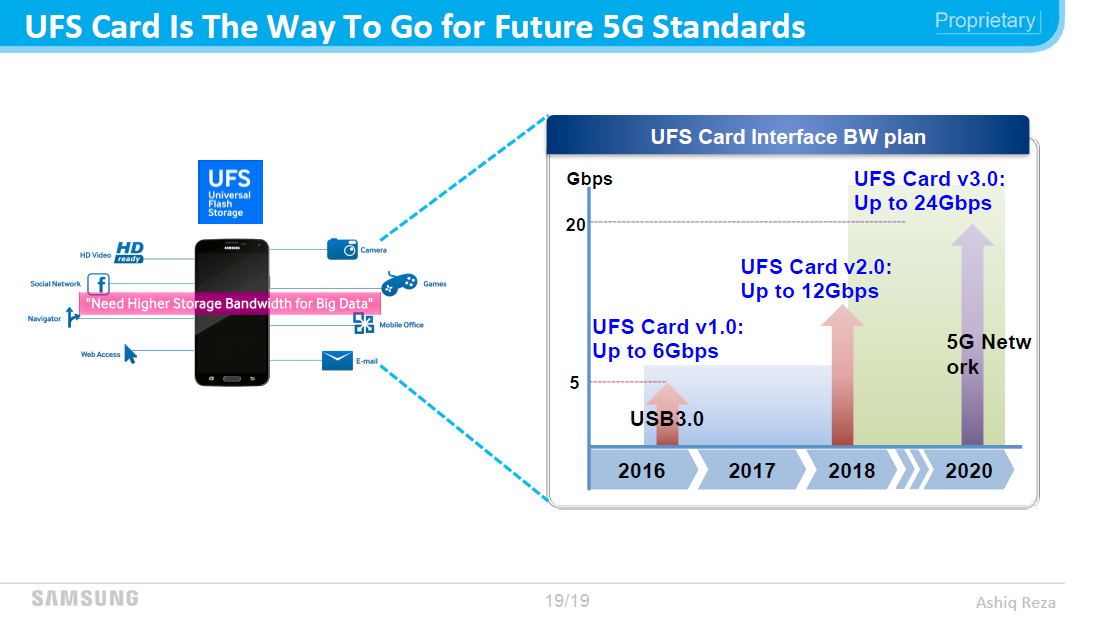








38 Comments
View All Comments
Eden-K121D - Thursday, July 7, 2016 - link
I think this would be supported in the upcoming Samsung Galaxy Note 7 Smartphone and the future S series as wellnismotigerwvu - Thursday, July 7, 2016 - link
I wish they had worked out a way to be backwards/forward compatible with microSD. It was nice to have a unified standard across phones, cameras, and whatnot. UFS may become as ubiquitous as SD is today, but it will have a harder time doing so as a competing standard than it would have otherwise.sonicmerlin - Sunday, July 10, 2016 - link
I hope support for all the old cards get dropped and this becomes the new standard. Then competition will push these super fast cards to rock bottom prices.I'm glad this new spec is incompatible with all the other ones. MicroSD cards are just way too slow, and decently fast ones carry a large price premium.
amnesia0287 - Thursday, July 7, 2016 - link
Now someone just needs to figure out how to stick em in raid :Opeterfares - Thursday, July 7, 2016 - link
Interesting. The shape suggests that the UFS card reader could possibly be designed to accept both SD and UFS cards.lmcd - Thursday, July 7, 2016 - link
Didn't see your comment but seconded.Wardrop - Friday, July 8, 2016 - link
How did you not see his comment, and yet still reply and agree with it? Maybe you're running a screen reader? I'm intrigued.iamkyle - Thursday, July 7, 2016 - link
I like the sharkfin built into the physical form factor.That means you know it's fast!
vladx - Thursday, July 7, 2016 - link
I don't see this becoming popular any time soon. These products will undoubtedly incur a huge premium over common microSD and besides some limited use cases the average consumer will see little to no benefit to the much improved speeds provided by UFS cards.This will take about 10 years to become affordable, same as SSDs.
zodiacfml - Friday, July 8, 2016 - link
Yes, these won't be mainstream soon because of the reasons you mentioned and the big possibility that manufacturers will be adding more built-in memory to devices rendering fast external storage, almost useless.Still, these cards cards will become popular for enthusiast or professional use for expanding storage of devices who needs such performance. Samsung seems addressing a need in these markets.